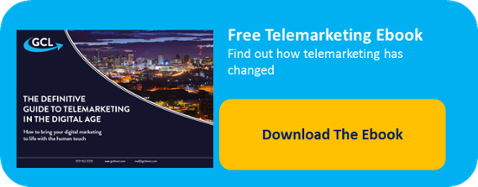Conducting market research is one thing, understanding it is a completely different matter! Large organisations all over the world carry out extensive market research to understand their customers better and to find out what drives them. And whether it’s primary, secondary, quantitative or qualitative, it’s a market researcher’s job to wade through the results and draw conclusions.
If you really want to hear things from the horse’s mouth (so to speak) then the best way to do this is through primary research. It may be more time consuming and expensive but at the end of the day, if you want to get direct feedback from your customers or even prospective customers about what they think about you, your products or your services, then primary research is the best way to go.
The beauty of primary research
In the B2B world, primary research can be a real asset to a business. It can create a dialogue with your target audience, gathering customer intelligence and then turning that intelligence into actions and marketing collateral. Through primary research you can build up a bank of unique data and knowledge that will make you more well-informed than the competition and give you the edge. How you present your findings can potentially bring more prestige to your organisation through the creation of added value content such as white papers or creative infographics.
The beauty of primary research is that you can carry it out directly with your customers, prospects or even your competitors. It may take the form of telephone interviews, focus groups or email surveys and it allows you to ask those key questions about what makes them tick, what motivates them to buy and basically anything you want to ask that will have a bearing on how you may want to act in the future.
The Top 5 Benefits of First Hand Research
1. Accuracy – because you’re gathering the information first-hand, what you gather will be more accurate and timely.
2. Deeper Insight – by directly recording the thoughts, words and feelings of your primary data, you can really get under the skin of what your prospects, clients or competitors are saying.
3. More Control – primary research gives you more control about how to collect the data and how you will use it later to nurture the response you want.
4. Results – primary research is a tried, tested and proven method of conducting effective research. So you know the results that you gather can be relied on.
5. Ownership – because you’ve carried out the research it belongs to you. The research is unique to your requirements and the insight you gain from it can give you an edge over your competitors. How you share the research later is entirely at your discretion. But remember it is an asset that has cost money to produce so think carefully before you give it away!
Understanding all the facts
Primary market research is the only way of getting direct feedback from clearly defined target groups. It allows you to ask very precise questions to a very specific group of people. This type of research is best undertaken anonymously or from an independent point of view. It can also be turned into very valuable content in the form of white papers, as well as helping you to develop new marketing and customer profiling/ engagement strategies.
A top tip is to complement valuable primary research with more cost effective secondary research. This will give you a better, well-rounded view of the market. Secondary research that you’ve obtained from sales data, reports, the internet and second-hand accounts of the market can be used in conjunction with primary research to compare and contrast findings and draw well-informed conclusions (ideal for big digital content pieces!). Whereas secondary research needs to be viewed in context using recent sources, primary research will give you a real-time view of how your target audience feels. When you combine the two, you can make decisions with a comprehensive understanding of all the facts.
Turning those facts into creative ideas is the next challenge….








